






July Edition: June 21, 2025
August Edition: July 25, 2025
September Edition: August 22, 2025
October Edition:
September 26, 2025
November Edition: October 24, 2025
December Edition: November 21, 2025
February Edition: January 24, 2026
March Edition:
February 20, 2026
April Edition: March 20, 2026
May Edition: April 24, 2026
June Edition: May 22, 2026









When Stacey and Ian Lugsdin undertook a Local Land Services project to fence off some of the remnant endangered sandhills on their properties at Warrendale and Nauru near Gunbar in 2018 and 2019, they had no idea the journey that they were about to undertake.
Firstly, despite commencing the fencing during the 2018/19 drought, the sites benefitted almost immediately from the removal of the stock. Slowly, the old needlewood trees began to sucker, and small green shoots began to appear on ancient rosewood trees. And the ground cover of annual weeds moved slowly to perennial grasses.
Some of the sites were direct seeded, and once the rains came, small acacias and hopbushes began appearing in the seeding lines. Also, a variety of saltbushes appeared, and the old white cypress pines began to seed.
The first field day for the site was held in September 2022. It was organised by Sally Ware from Riverina LLS and Andrea Cashmere from Western LLS to highlight the success of the original project. This day was well attended, and much discussion was had on-site about the benefit of fencing off sandhills.
The next field day was organised by Jenny Dwyer from Murrumbidgee Landcare in November 2024 as a

two-day session to discuss a number of topics including a new program called Natural Capital. A field walk and discussion day was held at one of the Nauru sandhills.
It was during this walk that participant and local landholder David Nevinson from Booroorban spotted some small herbs that looked like the highly endangered or potentially extinct Winged Peppercress. Photos were taken and sent to a rangelands ecologist who confirmed the identification and assisted with the loading of the finding on the website NSW BioNet Atlas, which is the repository for such species sightings.
Back at the Nauru sandhills, the site where the plants are located is lightly marked and GPS coordinates taken. And the journey for the Lugsdins continues as their sandhills regenerate more each year.
In only six years, the fenced sandhills have commenced changing back to pre-settlement status. It really is a very interesting story, and at least one little highly significant herb is benefitting from the management change.

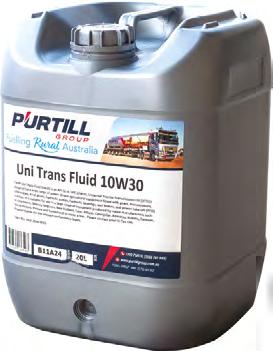


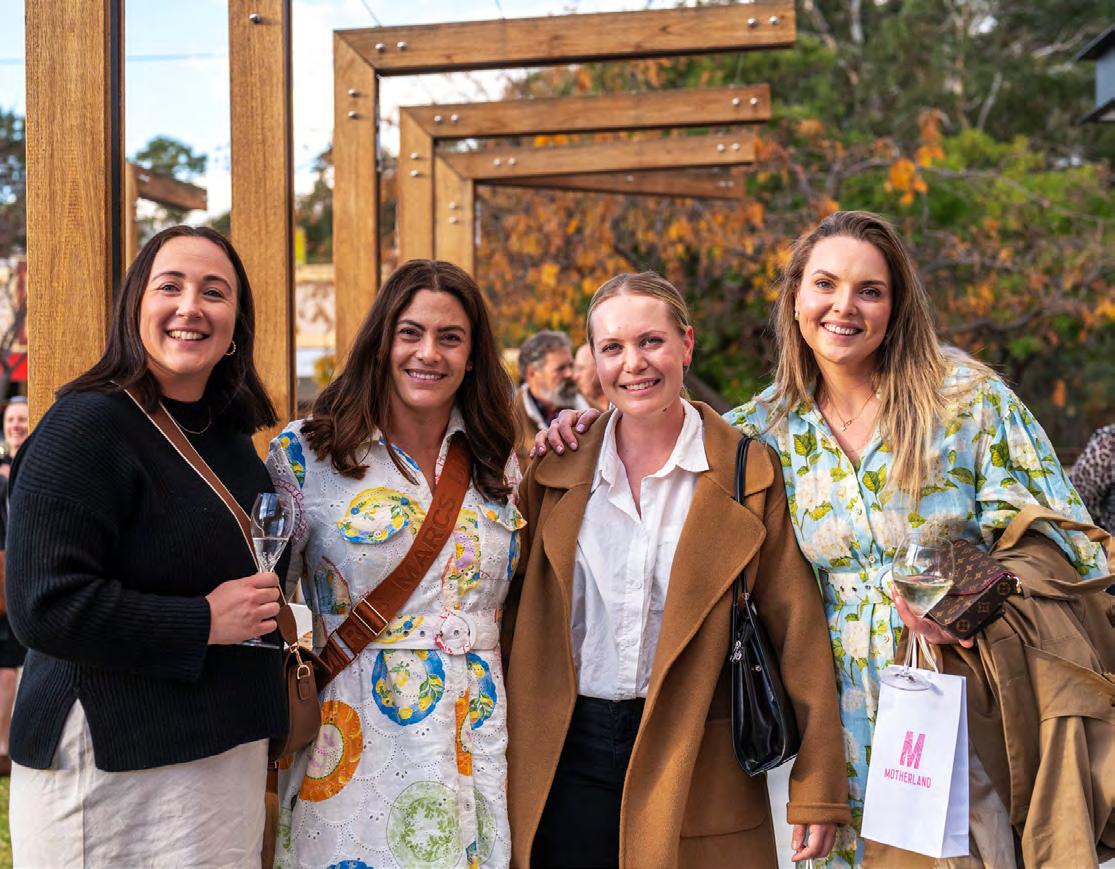





More rural and regional women will have access to the Motherland Village, thanks to the generosity of the Deniliquin community.
Motherland’s inaugural fundraising event in Deniliquin attracted 200 women from all over the district, who helped raise $30,000 to support the Motherland scholarship program.
Another $20,000 was raised at a second event in Kingaroy, Queensland, with one other fundraising event planned for Clermont, Queensland in early June.
Deniliquin’s event was described as “a powerful day of connection, conversation, and community” which celebrated the role of Motherland – a national charity working to reduce isolation and improve mental health outcomes for women on the land.
The scholarship fund supports rural mums doing it tough to access its Motherland Village program for free, and women from across the region are encouraged to apply.
Deniliquin-based Motherland Village ambassador Fiona Waters, who hosted the Deniliquin event, said Motherland Village is open to rural and remote mums who are craving connection.
Scholarship recipients generally have a connection to the land or agriculture, whether directly through their home location, career, or family, or indirectly through their spouses.
Other isolated mums not necessarily connected to agriculture or a farm may also be accepted to the program on a case-by-case basis in extenuating circumstances.
“We know the challenges of living in rural and regional areas, but we also know the value of community and connection through programs like Motherland.”
FIONA WATERS
“We know the challenges of living in rural and regional areas, but we also know the value of community and connection through programs like Motherland,” Mrs Waters said.
“As a facilitator of Motherland Village, I’ve seen the difference it’s made to the lives of many mums, and if we can give back by paying it forward, it means even more mums can access the services and support they need.”
Motherland Founder and CEO Stephanie Trethewey was MC and facilitated a panel of guest speakers at the Deniliquin event.
Special guests included former Deniliquin woman and Homegrown Kids co-founder Emma Hawkins, and TV presenter Catriona Rowntree.
Joining them on the panel were local mums and professionals Emily Small and Johanna Murphy.
Mrs Small is employed at Murray Irrigation Limited, and sits on the boards of both the Ricegrowers’ Association (RGA) and River Region Early Education.
Mrs Murphy is the owner of Deniliquin Physiotherapy and Sports Injury.
“The success of our first Deniliquin fundraiser is a testament to the generosity of local businesses, and the community spirit in the region,” Ms Trethewey said.
“The reality is, we simply can’t do what we do without the support of events like these, and we are so grateful to all the incredible sponsors and donors who made the Deniliquin event possible.”
The Deniliquin event was generously supported by many businesses, including the Edward River Council and platinum sponsors Yield Insurance and Saltbush Wind Farm.
In addition, many female-led local businesses and some from beyond the region donated prizes for a raffle which gave away more than $7,500 in prizes.
For more information, or to support Motherland, head to www.motherlandaustralia.com.au.


Servicing
Large range of tyre brands available Mobile service, we come to you! With on farm service and 24/7 call out.







The latest edition of the NSW Winter Crop Variety Sowing Guide is now available online and in hard copy, designed to assist grain growers and their advisers in making informed decisions to achieve more productive and profitable winter crops in 2025.
NSW Department of Primary Industries and Regional Development (NSW DPIRD) Technical Specialist Grain Services, Peter Matthews, said the guide has been updated with the latest research and development results from both departmental and industry-funded programs.
“This year, growers have an additional 16 cereal varieties and 9 canola varieties to choose from,” Mr Matthews said.
“While variety yield performance is a key feature of new varieties, it is crucial for growers to compare these new varieties with those currently grown to ensure local adaptation.”
“Some new cereal varieties offer improvements in disease resistance and enhanced tolerances to soil constraints, such as acidity and sodicity.
“The latest canola varieties also provide growers with new weed management options, with newer hybrid varieties offering dual herbicide tolerance.
“This will allow growers more flexibility in controlling problem weeds and rotating herbicide groups to prevent weed resistance.
“Although no new pulse varieties are released for NSW in 2025, performance data for varieties from 2023 and 2024 shows they continue to be among the highestyielding and best adapted to local growing conditions.”
Mr Matthews added that the Winter Crop Variety Sowing Guide includes data from the National Variety Trials, an initiative of the Grains Research and Development Corporation (GRDC), which conducts comparative crop variety testing with standardised trial management. This program provides valuable varietal information and comparisons on a regional scale.
“The aim of this guide is to help grain growers and their advisers make better cropping decisions, leading to more productive and profitable winter crops, ensuring the sustainability of farm businesses in NSW,” Mr Matthews said.
“Variable seasonal weather conditions, diseases such as stripe rust, and sharply rising crop input costs, such as fertilisers, all contribute to the need for careful planning and management.
“Growers should also focus on crop agronomy and best farming practices to maximise the potential of the upcoming season.
“In particular, cereal growers should be vigilant about disease risks, such as fusarium crown rot. 2024 crop surveys indicated high levels of fusarium crown rot in many wheat paddocks, making alternative crops important for affected areas.”
Mr Matthews emphasised that growers should be prepared with varieties of different maturities to respond promptly when sowing rainfall arrives.
“The recent rainfall in the north of the state contrasts sharply with the continuing dry conditions in much of southern NSW,” Mr Matthews said.
“Crop nutrition for canola will remain crucial, especially following the high yields achieved in many cereal crops last year. Paddocks to be sown with canola are expected to have low nitrogen levels, making early attention to crop nutrition vital.
“State production records for chickpeas, faba beans, and lentils were set last year due to the availability of better-performing pulse varieties.
“Growers are encouraged to continue selecting locally adapted, high-yielding varieties with strong disease resistance, particularly against major diseases such as Ascochyta in chickpeas and chocolate spot in faba beans.”
The 2025 Winter Crop Variety Sowing Guide is now available to download from the NSW DPIRD website, and hard copies can be obtained from local agribusiness stores, Local Land Services, or NSW DPIRD offices.
To download a copy, please visit – https://bit. ly/3QXFbW3

The Olympic sport of table tennis is experiencing a surge in popularity in the Deniliquin district. The international sport is one of the more recent additions to the comprehensive list of activities available at the Deniliquin Regional Sports and Entertainment Stadium.
Open to players of all abilities, whether beginner or advanced, table tennis is played at the local sports facility on Tuesday nights, with three weekly pennant competitions held throughout the year.
Having risen in popularity since an inaugural ‘Come and Try’ night in May 2023, the Deniliquin Table Tennis Club, with support from stadium management, has been actively working to provide appropriate facilities to ensure that all participants can enjoy playing safely.
“Table tennis is a fun sport which basically requires the table, racquets and balls,” Sports Stadium Manager John Arthur explained.
“But in the early stages we had the tables set up on concrete flooring, which was not ideal as it can create extra stress on a player’s ankles or knees.
“So our next important step was to install appropriate flooring.
“We raised enough funds for flooring on two table tennis courts, but our numbers kept growing, so we needed a third table and had to seek additional funds.”
After reading about Murray Irrigation’s community sponsorship program for eligible local projects, the organisation submitted an application, which was subsequently successful.
The Murray Irrigation grant was matched by the Deniliquin Stadium Committee, and now the three table tennis courts have the appropriate standard of flooring.
“I’m confident that now we have the third court, we will recruit more members and numbers will continue to grow,” John said.
The driving force behind table tennis at Deniliquin Stadium is Judy James.
Judy moved to Deniliquin in 2021 and, as a lifelong player, was keen to continue the sport she loves in her new town.
She is not only the “go-to person for table tennis”, as John describes her, but also coach and competition organiser. And she is more than qualified to carry out these roles.
Judy has represented Australia in table tennis, and last year played for her country against New Zealand.
She also competed in the NZ Open Veterans Championships, in which she won gold, silver and bronze medals; and is currently ranked in the top 10 at state and national level in both the over-65 and over-70 age groups.
“We are extremely lucky to have Judy assisting our table tennis program and providing her coaching
expertise to our emerging and more experienced players,” John acknowledged.
Although table tennis is a relatively new sport to the stadium, its growth has been impressive. Two years ago, it became affiliated with Table Tennis Victoria (like many sporting bodies in Deniliquin, for geographical reasons they align with Victoria rather than our home state of NSW).
In August this year, it will host a Table Tennis Victoria tournament which will bring more than 100 players plus supporters to town.
“It will be a big boost for our local economy,” John said.
“We’ll have to provide between 20 and 30 tables; the tournament attracts ranking points, so players will come from far and wide chasing these points to gain eligibility for tournaments at a higher level.”
Everyone involved in table tennis at the Deniliquin Stadium is excited to see the tournament hosted locally, and hopes it will be the catalyst for another growth spurt. John says it will provide financial benefit to the facility, as well as offer a significant boost to local business and help promote Deniliquin and district as a holiday destination.
As an experienced sports administrator, John is well aware the positive community health impacts stemming from the stadium’s activities far outweigh their economic benefits.
However, for these to be realised, it is imperative the appropriate facilities and equipment are available. This, in turn, increases the number of people who want to participate in the stadium’s programs.
“Sport is a great way to make friends and connect with others in the local community,” he said.
“It promotes a healthy lifestyle and offers mental health benefits.”
According to John, table tennis improves hand-eye coordination, balance and flexibility, is easy on the joints, keeps the brain sharp and burns calories.
“Case studies have also shown that table tennis can benefit those living with Parkinson’s, children and adults with physical and mental disabilities, and is also a good prevention for Alzheimer’s,” he said.
Table tennis a sport for all ages
Table tennis is actively promoted as an option for over-50s due to its low-impact nature and the social connectivity of being in a club. The oldest player in NSW is 102 and is still competing!
Table tennis is just one part of Deniliquin Stadium’s diverse sporting program which is designed to suit all ages. Other activities include basketball, netball, badminton, soccer, boxing, Lifeball and, more recently, pickleball.
The facility also provides coaching accreditation support, and there are volunteer opportunities for those who want to get involved beyond the sporting arena.
In addition, the stadium hosts regular school holiday programs which, during the most recent school break, attracted a record number of children who enjoyed a vast range of activities.
“At the stadium we have activities for the very young, through to school age, adults and seniors,” John said.
“We understand it is vital each activity has proper, well-maintained equipment.”
Stadium plays host to a spectrum of activity
The Deniliquin Regional Sports & Entertainment Stadium was built in the 1980s after a strong community push, with extensions built in 2019–20.
It is used annually by more than 20 clubs, with an average of more than 500 players, plus spectators, each week.
Owned by the Edward River Council and managed under contract by the community group, Deniliquin Sports Park Incorporated, the facility delivers highquality, innovative programs for junior and senior participants, as well as disability inclusion activities and Indigenous programs.
It is also a venue for exhibitions and conferences, and is used extensively by schools in Deniliquin and across the broader Riverina for regional events.
“Our committee believes the community is entitled to the best possible facility in the area,” John said.
“We are continually improving what we provide for those who use the stadium, and table tennis is a part of this.
“The new flooring (pictured right), with support from Murray Irrigation, will help us grow the table tennis program and further develop the sporting opportunities we can offer in our region.”


Love a good spreadsheet? Got a knack for technology?
Want to make a real difference in people’s lives?
Join a small supportive team that helps families navigate conversations and decisions that shape their future We offer practical support and trusted guidance for life’s big decisions, from succession to aged care and everything in between
THE DETAILS: OUR DREAM APPLICANT:
Part-Time | 3 days a week
Based in Deniliquin –remote applicants welcome
Salary based on experience and skills
Start date: ASAP or when it suits us both
FOR THE FULL JOB DESCRIPTION OR TO APPLY PLEASE EMAIL results@peppinfamilyconsulting com au
You ve got a sharp mind, a way with numbers and knowledge of financial analysis
You re seeking work that feels meaningful and makes a real difference to peoples lives
You love working in Excel and formatting documents
You have a collaborative spirit, empathy, a kind heart and a genuine desire to support families

For up to date information on our Winter Works program, including guaranteed water delivery dates and the 2025 season trade closure dates, please visit the Murray Irirgation website.
Murray Irrigation is committed to the safety, health and wellbeing of our staff, contractors, customers and the broader community. If you come across a Murray Irrigation work site, please make sure you:
• Slow down
• Keep a look out for traffic signage
• Adhere to changed road conditions
• Remember, even if you can’t see our work crews, it doesn't mean they are not there.

Scrapers: Caterpillar 623G, 623B, and 2 x 623F
Excavator: 1 x Komatsu PC200-8, 1 x Hidromek 310LC, 1 x Hidromek 230LC
Longreaches: Komatsu 300-8, 18m Boom & Komatsu 220-5, 14m Boom
Graders: Caterpillar 160M AWD, 2 x Caterpillar 140H

Bulldozers: Caterpillar D7H & Caterpillar D6T with Rake
Tractors: Steiger 450 With Laser Buckets - 14 & 16. Case IH Steiger 535 & 600
Loaders: Cat IT 28B Cat 960F
Low Loaders: 2015 Quad Axel (with Tandem Dolly), SES Tri-Axel
Water Tanker: 45,000 Litres
Roller: Dynapac CA602D (smooth drum & pad foot)






The ongoing threat of mouse activity to Australian grain growers is the focus of two key investments aimed at reducing the impact of mice in crops.
The Grains Research and Development Corporation (GRDC) and partners will invest $11 million in multi-year collaborative projects to enable continued cutting-edge research led by Australia’s national science agency, CSIRO.
Elevated mouse populations in key grain-growing regions have led to substantial economic losses for growers over many years. While advancements in farming systems have resulted in tremendous benefits, they have also inadvertently contributed to increasing the pest problem.
GRDC pest manager Leigh Nelson explained that modern systems provide more cover (from retention of crop residues), more food (from increased cropping intensity), and less disturbance (from reduced tillage).
“This has changed the face of mouse management on grain farms. However, there are a range of management practices that can be used to reduce the impact,” Dr Nelson said.
“Over the years, GRDC initiatives have improved mouse surveillance techniques, refined predictive models, and promoted the widespread adoption of effective management practices through robust communication and extension activities.
“We will continue to work with key research partners such as CSIRO to tackle the challenges posed by mice to grain production through investments.”
Senior research scientist Dr Wendy Ruscoe is leading the research on mouse ecology to increase understanding of house mice in zero and no-till cropping systems. Over the next five years, CSIRO research will develop a range of impact mitigation strategies by investigating:
• How different farming practices (e.g. stubble management, strategic cultivation, grazing) can reduce food availability and habitat quality for mice, thereby lowering breeding success and survival.
• The effectiveness of baiting strategies, including how to increase toxic bait encounter rates and reduce background food competition to improve kill rates.
• Novel bait formulations (e.g. coloured or pelletised bait) and how bait appearance or substrate might influence detectability and uptake by mice.
• The use of non-lethal deterrents, such as seed coatings or “chemical camouflage,” to protect freshly sown seed from mouse predation at crop establishment.
• The role of invertebrates and other high-protein food sources in supporting rapid mouse population growth, with a view to informing broader pest management strategies.
• The impact of non-crop habitats (e.g. field margins and pasture paddocks) as refuges or breeding grounds during low-resource periods, and their contribution to crop reinfestation.
Some of this research will be conducted in partnership with the University of Sydney, including collaborative work on novel deterrents and bait visibility based on mouse visual perception.
“The more we know about mouse behaviour in these systems, the more we can help grain growers reduce their economic impact through leading crop protection practice and mouse management techniques,” Dr Ruscoe said.
Investment from GRDC will also support ongoing monitoring and surveillance of mice throughout cropping zones to predict seasonal mouse population outbreaks.
This work is being led by CSIRO Research Scientist Dr Peter Brown and will include:
• Monitoring mouse activity at over 200 sites in key grain-producing areas, three times per year, to provide consistent, region-specific data.
• Enhancing spatial forecast models and developing interactive mapping tools to help growers assess mouse risk and make timely, informed management decisions.
• Field-testing and optimising remote monitoring devices that automatically detect and record mouse activity in real-time.
• Ongoing facilitation of the grower-led National Mouse Group, an information-sharing forum bringing together growers, industry and researchers.
• Producing and distributing seasonal ‘Mouse Updates’ with management recommendations agreed by the National Mouse Group.








As lambing season progresses and seasonal conditions remain uncertain, producers are encouraged to review their stock feeding and management strategies.
For the sheep producers, you’ve got your ewes pregnant, scanned and managed through to lambing time to hopefully have a good lambing per cent, the next critical stage is maintaining these animals through to weaning and beyond.
Managing the weaning process well will assist in reducing mortality and setting up the longer-term performance of stock – ensuring ewe weaners reach target weights for conception as maidens or ewe lambs and weaners for a target market reach market specs in a suitable time frame. Commencing this with good management of all stock leading into weaning will ensure stock are set up as best as possible for the transition.
Some steps to assist the set up of the weaning process:
• Imprint feeding – introducing feed sources while lambs are still on ewes will improve their adaptation to feeding once weaned as they have learned the process.
• High quality feed available – short green pasture with legume content if available, highquality grain and roughage as supplementary feed
• Low worm risk – utilise clean paddocks for weaning
• Water quality – clean, fresh water preferably through a reticulated water system with adequate flow rate for the number of stock, troughs need to be cleaned regularly
Monitoring stock post weaning will ensure you identify poor-doers and other issues early on for management. If weighing stock regularly is an option for you, aiming to meet a 50per cent target of mature body weight as soon after weaning as possible will assist in reducing mortality and boosting long term productivity of stock. If stock can be grouped by weight groups this will allow targeted management and feeding, with lighter stock requiring more targeted management.
Additional resources on weaning can be found at Local Land Services, NSW DPI and MLA websites; alternatively contact your local LLS office and speak to an Agriculture team member or District Veterinary Officer.
Pre-paid Feed Tests and Water Quality tests are currently available at LLS offices across the Murray region for producers to use, have a conversation with a team member about accessing these resources.
Contributed by Rebecca Stacey (pictured), senior local lands officer - mixed farming with Murray Local Land Services.

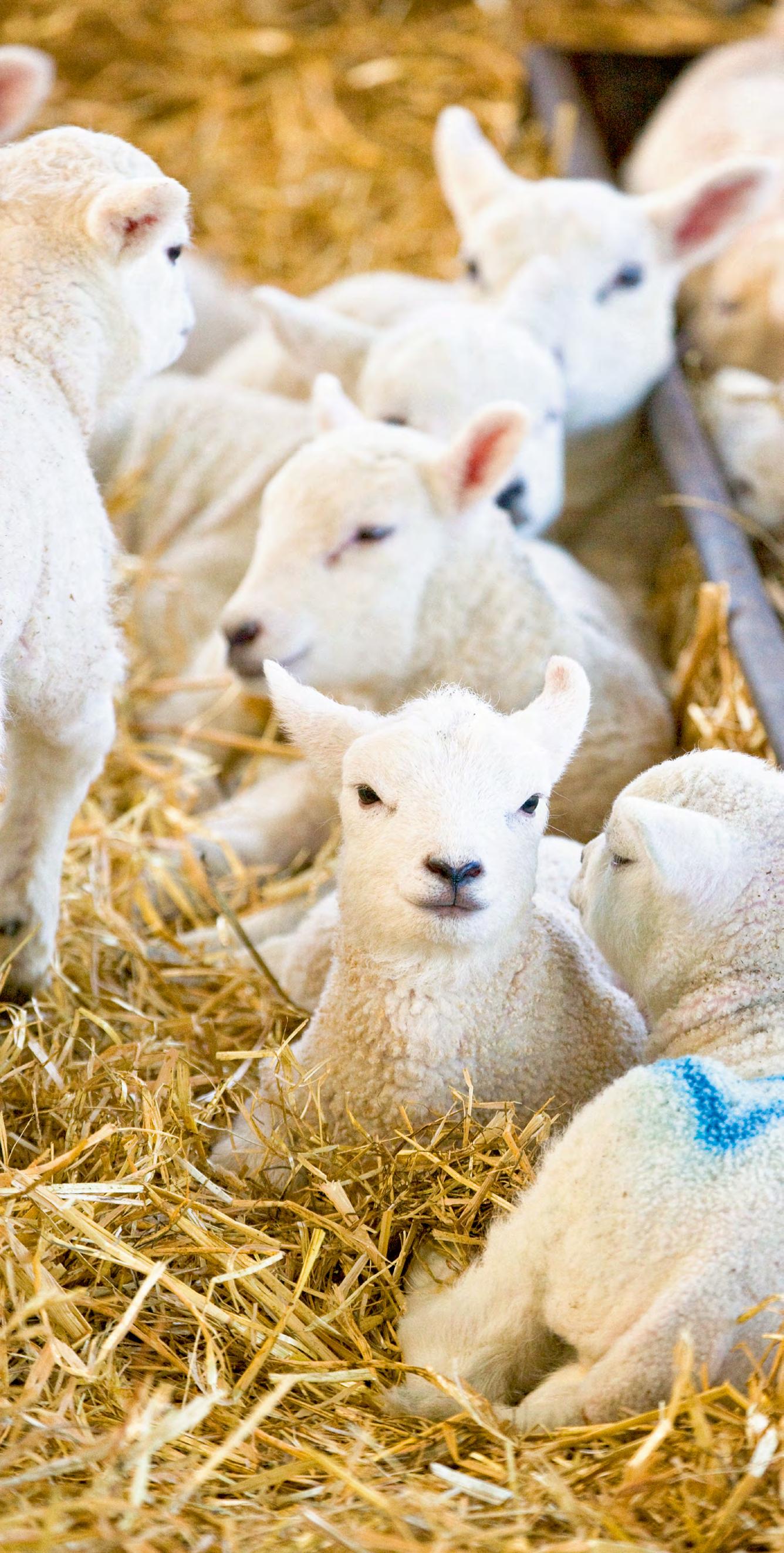

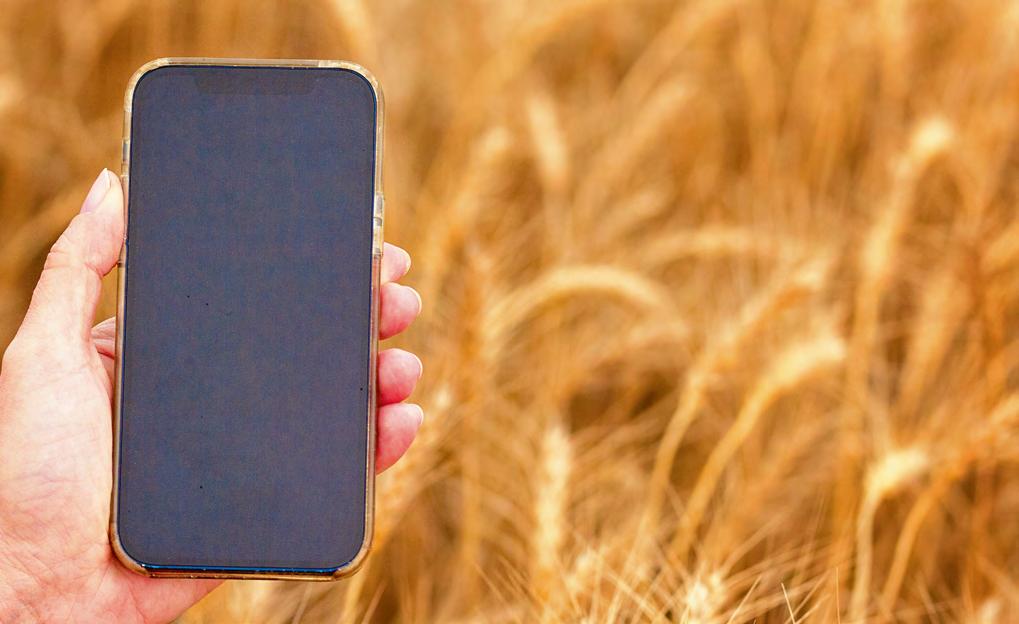







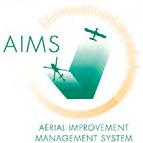

Crop damage from fire and hail is a real problem Australia-wide.
With Nutrien Insurance, we can arrange cover so you’re protected.
Options include, but are not limited to:
• Crop cover for fire, hail, chemical overspraying and straying livestock
• Storage and transit cover for harvested seed
• Early cover for next season’s winter crops
• Various excess options
To obtain a quote, contact your local Nutrien branch or for more information visit nutrienagsolutions.com.au/insurance
Also available is PrePay Plus, which offers you the advantage of earning rewards on funds lodged.

By prepaying into your account ahead of time, you will earn a reward of five per cent per annum on those funds to be used on our extensive range of products as and when you need them.
Why use Nutrien PrePay Plus?
• Small business entities may be entitled to an upfront tax deduction.
• Earn five per cent per annum on your prepaid balance to support next year ’s input costs.
• Use your funds on our extensive range of products, from crop inputs to animal health products.
For more information, visit nutrienagsolutions.com.au/finance/prepay-plus
Contributed by Shania Bentley, branch commercial and sales manager for Nutrien Ag Solutions in Finley.
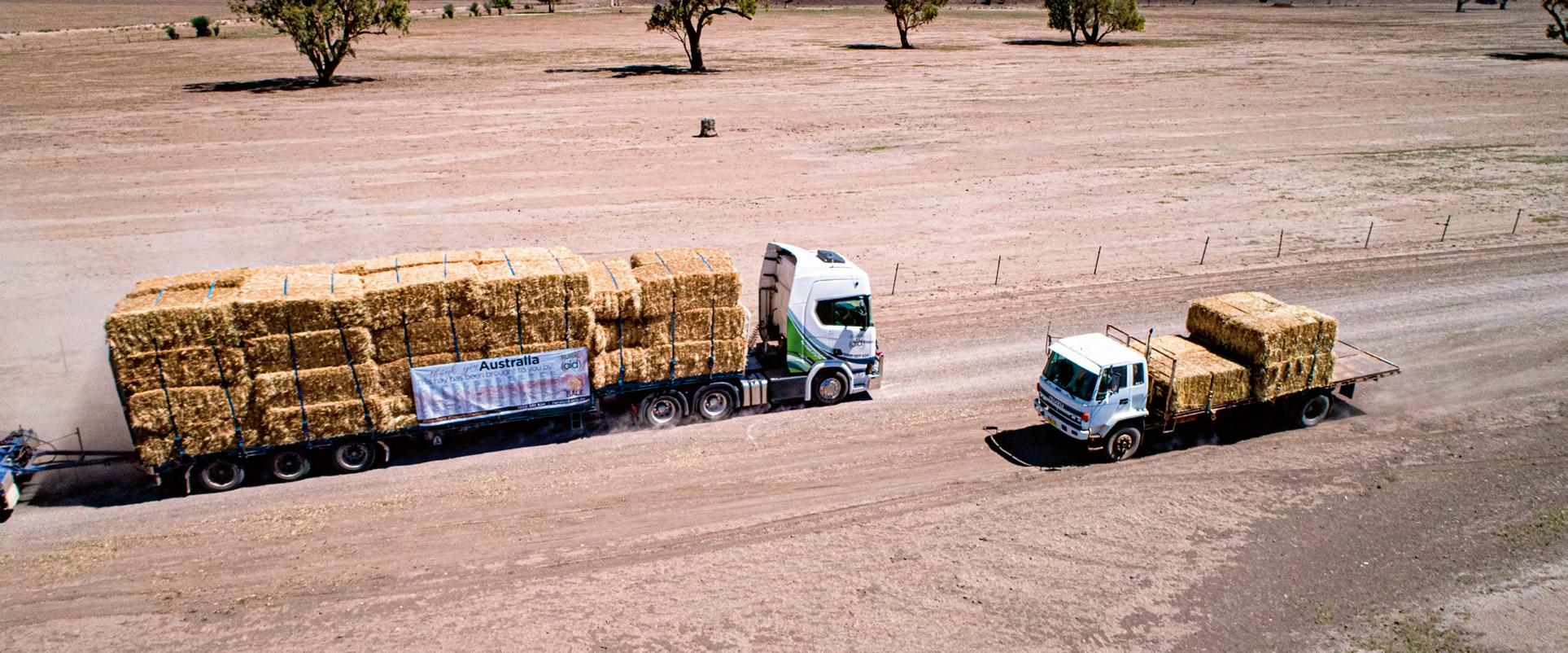
This tax time, Rural Aid is calling on every Australian to take action - because no farmer should stand alone.
Right now, in the heart of rural Australia, farmers are silently battling mental health struggles. Behind every fence line and machinery shed are men and women carrying the crushing weight of droughts, floods, skyrocketing costs, and isolation. The reality is stark: Australian farmers are dying by suicide at rates 59 per cent higher than the national average.
These aren’t just statistics—they are lives lost, families shattered, and communities forever changed. Nearly half of all farmers have experienced thoughts of self-harm or suicide. Yet many suffer in silence, unable or unwilling to ask for help.
Rural Aid is asking Australians to stand up and take action for our farmers. Your support can help fund critical ongoing mental health services, offer crisis counselling, and ensure farmers have someone to turn to when it matters most. This isn’t just about farming—it’s about securing a future where farmers and their families feel supported through life’s toughest challenges.
“Access to mental healthcare in rural areas is often limited or non-existent,” said Rural Aid CEO John Warlters. “Many farmers simply don’t have the support they need to cope with the challenges they face daily. We need to address this critical gap.”
Carol Hill, a farmer from Coraki in the Northern Rivers region of New South Wales, has experienced firsthand the emotional strain of working the land. After enduring years of drought, bushfires, and floods, she says the support from Rural Aid was life-changing.
“Many farmers simply don’t have the support they need to cope with the challenges they face daily. We need to address this critical gap.”
JOHN WARLTERS.
“You don’t want to admit that you’re struggling. Farmers are strong, but sometimes we need support too,” said Carol.
“I was really thankful to Rural Aid for reaching out and asking, ‘Hey Carol, do you need help? Let’s talk about it.’ And I think without them, I probably would have gone under.”
While 75 per cent of farmers say they would reach out to a counsellor, 38 per cent report difficulty accessing services. Rural Aid’s mental health team is working to close that gap—but they need the public’s support to help more farmers.
“We’re asking Australians to stand up to help ensure No Farmer Stands Alone. A donation this tax time will
help deliver free, professional mental health support to rural Australians who need it most,” said Warlters. “It’s a chance to show our farmers that they’re not alone.”
Rural Aid’s free mental health programs are making a critical difference for farmers and their families. These include:
• One-on-one professional counselling, including onfarm visits and regular check-in calls
• Community mental health workshops to open conversations and reduce stigma around personal wellbeing
• School programs that build resilience in rural children and teens
To support mental health in rural Australia and make sure No Farmer Stands Alone, please donate today https:// taxtime.ruralaid.org.au/.
Rural Aid is Australia’s leading rural charity, dedicated to providing practical support and vital services to farmers and rural communities. Since its establishment in 2015, the charity has been a lifeline during times of crisis, delivering essential services such as mental health support, hay, domestic water, and community engagement. As the organisation celebrates 10 years of service, it continues to partner with farmers to navigate challenges, recover from hardship, and build stronger, more resilient rural futures.
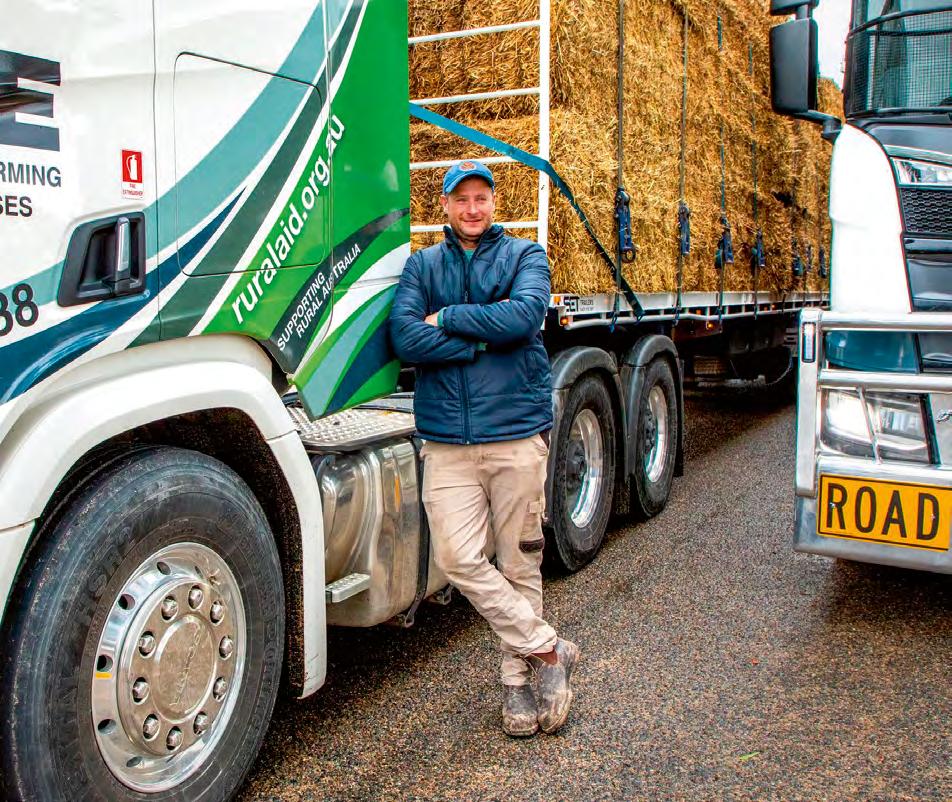
At FarmTalk, we’re committed to spotlighting organisations making a real difference in rural communities. One such group is Rural Aid, which continues to support Australian farmers and regional communities impacted by drought, floods, fires, and other natural disasters.
Farmers are known for their resilience and pride—many won’t ask for help, even when they need it most. Rural Aid recognises this and is working to ensure that no farmer has to struggle in silence.
If you or someone you know is part of a farming family doing it tough, Rural Aid encourages registration through their support services. It’s a simple step that opens the door to a range of assistance.
• Head to the Rural Aid registration page: https://faa.ruralaid.org.au/farmerregistration
• Fill out and submit the form
• Look for a confirmation email
• Rural Aid’s team will verify your details and reach out once registration is complete
Note: Registration does not automatically trigger aid—you will need to visit the services page to request specific assistance.
Eligible primary producers - including those working with livestock, crops, or bees—are encouraged to register. Completing all relevant fields ensures faster support.
If you have any questions or don’t hear back within seven days, Rural Aid’s friendly team can be reached at 1300 327 624.
No farmer should face hardship alone. Rural Aid is a trusted lifeline for those who dedicate their lives to feeding the nation.



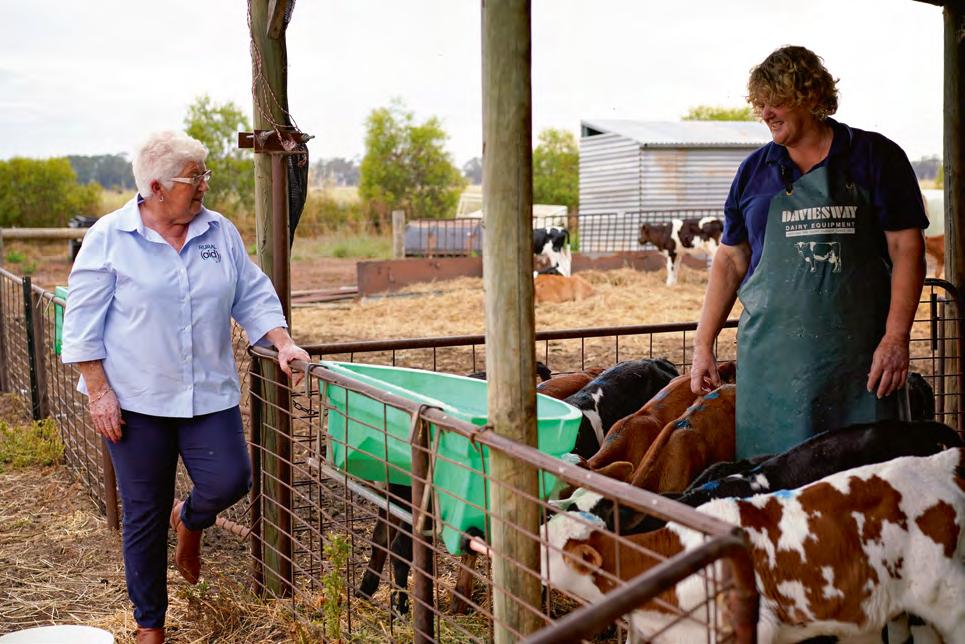


All of Australia is moving towards NLIS-accredited electronic identification (eIDs) for sheep and goats. So, where are we up to, and what is expected of you right now?
Victoria completed its transition to eIDs for sheep and goats as of 2022.
This means that before sheep or goats of any age leave a property in Victoria, they must be identified with an eID. Even animals born in NSW that are already identified with a visual ear tag must be re-identified with a postbreeder eID before they leave your Victorian farm. This includes movements to saleyards, directly to an abattoir (in NSW or Victoria), or to another property.
NSW saleyards have started scanning all sheep presenting to yards that are identified with an eID. This means all Victorian sheep (for which eID identification is mandatory), or any other sheep that a producer has chosen to identify with an eID, must be scanned when sold at a saleyard.
While animals may have multiple visual tags, there must only be one eID per animal. If you purchase a sheep with an eID, rather than inserting a new eID, you should transfer the existing tag to your Property Identification Code (PIC) on the NLIS database. This can be done by scanning the tag or by using the identification code printed on the outside of the device. These transfers are done as individual transfers on the NLIS database, rather than as a mob-based movement.
NSW is currently transitioning towards eIDs for sheep and goats. All lambs and kids born from January 1, 2025 in NSW must be identified with an accredited NLIS electronic tag—not a visual tag—before they leave a property.
Sheep and goats born before January 1, 2025 can still be identified and sold with an NLIS-accredited visual tag until December 31, 2026. However, you may choose to voluntarily tag with an eID during this time.
After January 1, 2027, all sheep and farmed goats must be identified with an electronic tag before moving or being sold.
In short, it is still acceptable to sell lambs or kids in 2025 and 2026 with a visual tag, if they were born in 2024 or earlier.
If you are buying any sheep privately (i.e. via online sales such as AuctionsPlus, through an agent, or directly from another producer), you, as the receiver, are required to upload the movement of the sheep onto the NLIS database. If the sheep arrive at your property with visual tags (and were born before January 1, 2025), you can complete this movement as a mob-based movement. All the information required to do this transfer should be
provided on the movement document (e.g. the National Vendor Declaration).
If the sheep or goats you are buying are identified with an eID, you must complete an individual movement on the NLIS database for all stock with an eID. You can scan the tag or record the NLIS ID printed on the tag, then use this along with the information on the movement document to complete the transfer.
If you are buying stock through a physical saleyard, the saleyard will complete the movement on the NLIS database for you.
eID identification leads to a more robust tracing system, which is vital in the event of a disease outbreak or residue traceback. Transitioning all of Australia to eID for sheep and goats will increase livestock traceability and help uphold our global trade reputation as a leader in clean, green produce.
If you have any questions regarding tagging, scanning, or completing NLIS database transfers, please contact your nearest LLS office.
FARMtalk welcomes community contributions from farmers, experts and professionals who make their living and life on the land. If you would like to contribute, there are several ways to do so.
• Get in touch and give us a tip of a great story idea.
• Contribute an article: If you are an expert in your field then contributing once off, or regularly, is a great way to get started in our FARMtalk magazine. Contact Zoe McMaugh at farmtalk@ denipt.com.au or 03 5881 2322.
• Become an author: FARMtalk is open to occasional contributors who are experts in their field or authorities on a subject or area. Once you have contributed an article, and the editorial team have approved you, we can set you up with a regular column to contribute. We would love to hear from you. Contact Zoe McMaugh at farmtalk@ denipt.com.au or 03 5881 2322.
• Have a fascinating farm in mind for us to showcase? Tell us! We would love to hear from you.
Contact Zoe McMaugh at farmtalk@ denipt.com.au or 03 5881 2322.
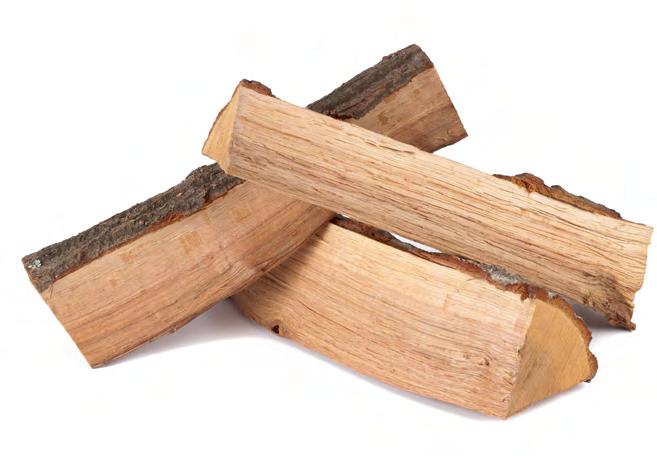
People looking for fuel to stoke up their winter fires have been warned that collecting wood from Travelling Stock Reserves (TSRs) is illegal, and fines of up to $5,500 can apply.
The warning was issued by Murray Local Land Services after a spate of illegal firewood removal on TSRs across the Murray region in May. Dumping of rubbish was another concern and is also illegal.
Murray LLS Team Leader of Invasive Species, Plant Health & TSRs, Peter O’Shannassy, said there are no exemptions, and hefty fines apply to anyone caught removing timber or disturbing either live or dead vegetation on the TSR network.
“While permits are available to collect firewood from selected state forests, Local Land Services does not issue permits for wood collection, and we want to make it very clear that removing either standing or dead timber is not allowed on TSRs under any circumstances, and action will be taken against those who are caught,” he said.
“It takes 100 years for tree hollows to form, and less than 20 minutes to destroy them.”
Mr O’Shannassy said there have been reports of people selling illegally removed firewood on local buy, swap, and sell sites.
Household goods, building materials, and general waste are also increasingly being dumped in these reserves, damaging habitat, spreading weeds and pests, and creating safety hazards.
Stock routes are important in times of drought for the movement of livestock and are also an extremely valuable refuge for many rare and endangered native plants and animals.
Fallen logs and standing dead wood provide critical habitat for a wide range of species and need to be left in place in the natural environment. Decaying timber and leaf litter are also important in the process of nutrient recycling back into the soil.
People can report any illegal activity to Local Land Services on 1300 795 299 or to their local police station on 131 444. Making a note of information such as registration numbers, descriptions, locations, and dates can provide valuable assistance in the prosecution of offenders.
For more information, contact your nearest Local Land Services office on 1300 795 299.



20

